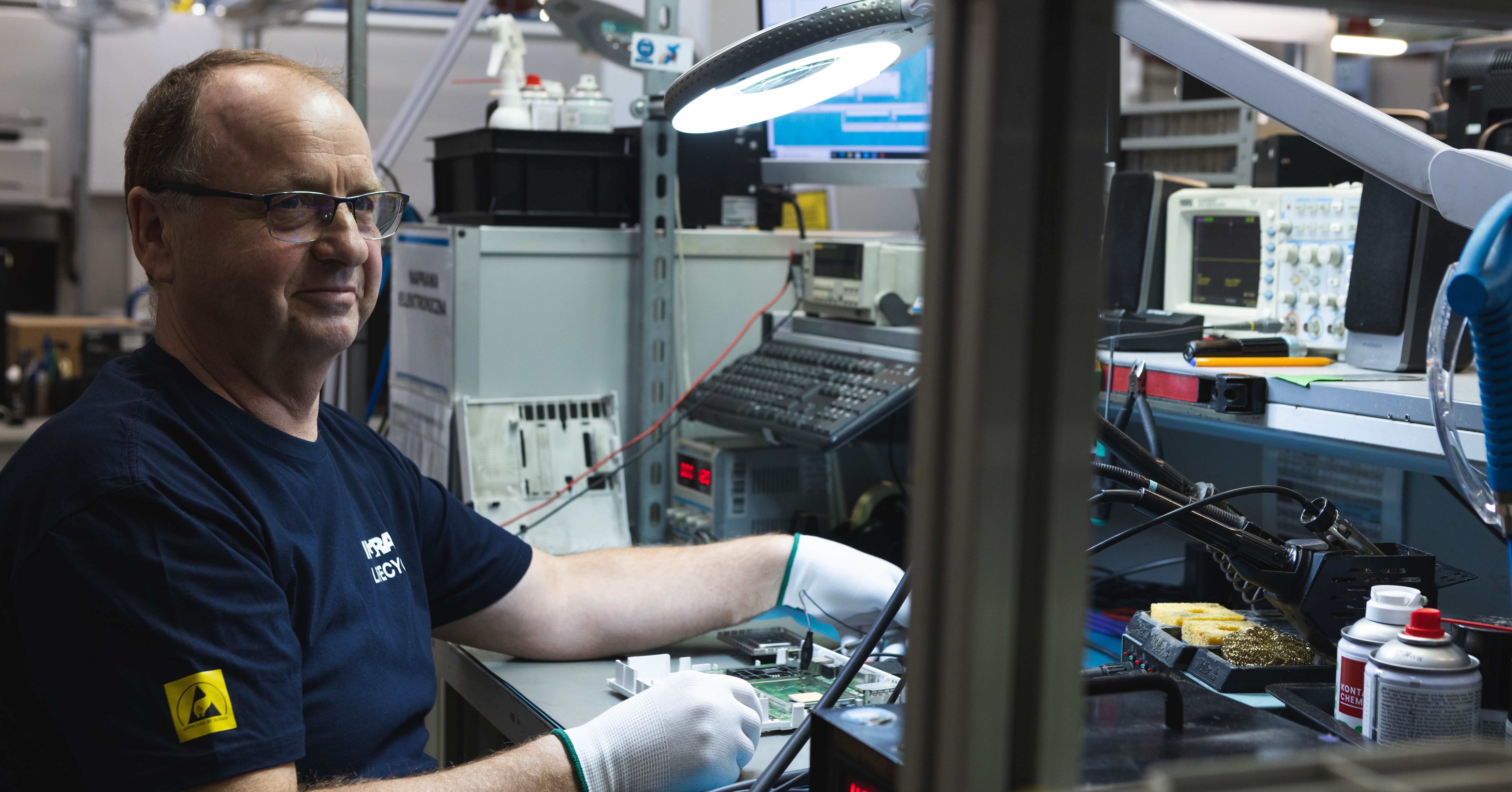Those responsible for managing customer premises equipment need to manage these returns sustainably. CPE includes set-top boxes, routers, wi-fi repeaters, powerline adaptors, and all the cables. Failing to do so risks adding all these products into landfills, causing environmental damage.
Ingram Micro Lifecycle provides returns management and recovery services to network providers and manufacturers of CPE. These solutions result in sustainable refurbished products for their customer base.
Below, we explain how you can boost your sustainability efforts with refurbishment practices for CPE.
6 opportunities to enhance CPE sustainability
There are various opportunities to make customer premises equipment and accessories more sustainable. The high volume of these products in circulation could lead to a high negative environmental impact. It's important to lower the impact of their creation and use where possible.
1. Introduce lifecycle extension tactics
Enabling the repair and refurbishment of CPE will ease the pressure on manufacturing to produce brand-new products. Less manufacturing operations reduce the CO2 emissions and volume of raw materials required.
Enhance your returns management program by adding recovery processes. These restore the quality and condition of the returned products, enabling reuse.
2. Challenge the design
Look for opportunities to give feedback on the design and influence the output. Collaborate with the manufacturer and create a recommendation list of improvements. These can include using more sustainable or repairable materials or making the repair of parts easier.
A third-party logistics provider with technical experience in repair and refurbishment will assist in making recommendations. Partnering with one enables you to focus on the core objectives of your business. They will still report on KPIs, providing sustainability data, for your own reports.
Open discussions to work towards making the product more robust and long-lasting. Swap perishable materials for those that are more hard-wearing. It will need less refurbishment to make the product reusable.
Consider how easy it is to complete the repair and refurbishment of the products effectively and efficiently. How easy is it to access parts? What level of techniques would be needed, invasive or non-invasive? Factor these in when designing the product and it becomes easy to extend the lifecycle of the product, making it more sustainable.
3. Maintain a local inventory of repaired products
By putting the procedures in place to make technology reusable, you create a supply of goods as an alternative to brand-new products. These refurbished products are on hand and ready to use. This is beneficial for your business in many ways. It saves logistics time and reduces potential upstream supply issues. There's lowered CO2e from the decreased logistics, improving the carbon footprint of your supply chain.
4. Create a catalogue of parts
Improving your refurbishment activities not only brings reusable whole units in-house but also parts. Products will inevitably become irreparable. There are only so many times when repair processes will be effective. At this point, the individual components may still be salvageable. During disposition, assess and strip appropriate parts to enable the restoration of another product. Inventory these donor parts for use instead of brand-new parts.
Having quicker access to parts removes pressure from further up the supply chain in the creation and shipping of brand-new components.
5. Enables fault-fix analysis
Through analysis of returned CPE, you’ll collect data around product faults and commonly experienced user issues. This data can be fed up the supply chain to resolve any manufacturing issues that minimize future products being returned for that issue.
Understanding these faults and user issues can enable better troubleshooting and diagnosis.
Ultimately, fewer faulty products mean fewer returns and less risk of product waste and CO2e from logistics. It improves your cost efficiency too.
6. Rekitting
When sending your high-quality refurbished stock out to customers, be sure to maximize the reuse of peripherals, particularly cables. These can be taken from previous returns, after being carefully checked for damages and cleaned.
Ready to improve your CPE sustainability?
To ensure these approaches are efficient and effective, it’s best to align with industry best practices, technical know-how, and expert insight. These will ensure your efforts are successful without compromising on end-user experience.
Ingram Micro Lifecycle works with customers in providing value-added services that deliver more sustainable processing of CPE products and accessories. We have the agility and drive to innovate for better solutions that save costs, improve end-user satisfaction, and boost sustainability strategies.
Get in touch with us today to learn more about how we can make your CPE returns more sustainable with our recovery solutions.
Further reading:
- Best practice: refurbishment at the 4 stages of CPE lifecycle
- 9 benefits of using a 3PL for CPE returns
- Enabling the serviceability of CPE
- 4 automation improvements for reverse logistics
- How to optimize reverse logistics for the 3 pillars of sustainability
- Tips for getting the most from your returns management partner











